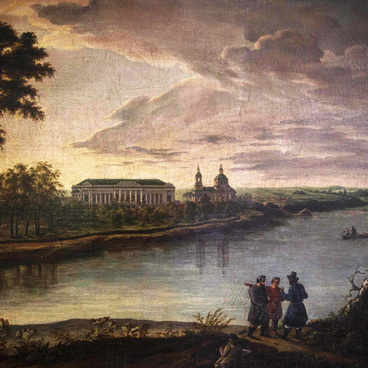You see before you the microphone headset helmet that was used during test flights by the world’s first cosmonaut, Yuriy Gagarin. Gagarin came to Saratov in 1954 to study at Saratov Vocational School. When he was a fourth-year student, he found out that the city had a flying club. While continuing to study at the vocational school, Yuriy became a cadet at DOSAAF, the Soviet Army, Air Force, and Navy Volunteer Society. After a long period of theoretical training on the ground, flight practice began for him in February 1955. During that practice, the students wore flight overalls, leather helmets, and leather cuffed gloves on their hands. In 1955, cadet Gagarin made his first independent flight, and received an excellent mark for that.
After graduating from vocational school, Yuri Gagarin stayed in Saratov for another eight months to complete his studies at the flying club. In 1955, he had earned two diplomas with honors: one after graduating from the vocational school and the other after graduating from the flying club. To fulfill his life-long dream, Gagarin went to study at the Orenburg Military Flight School, after which he received an assignment with naval aviation in Russia’s polar regions. But later he found himself in the area of Saratov yet again: it was here, near Saratov, that he landed after making that first historic flight into space. After the legendary flight made by Yuriy Gagarin on April 12th, 1961 museum staff contacted the employees of the flying club by phone, and the next day the following items were transferred to the museum under a handover act: ‘Cotton overalls, flight microphone headset helmet, parachute boots, protective goggles, helmet liner, cuffed gloves’. There is still the record on the back of the handover act: ‘All these things were used by the cadets at the flying club in 1954-55 by the group under pilot instructor Martyanov. In that group Yu.A. Gagarin studied airmanship’.
The Yak-18 airplane that Yuriy Gagarin learned to fly on was also given to the museum. The airplane is a rare piece in the museum’s space collection. It was transferred to the museum with the inscriptions: “On this plane in 1955 Yu.A. Gagarin learned to fly” on the right side, and with “To the regional museum from the Saratov flying club” on the left side. The museum received an official document that confirmed the transfer of the aircraft for storage in perpetuity “in commemoration of the successful flight made by Soviet citizen, Major Yuriy Alekseyevich Gagarin, into space”.
After graduating from vocational school, Yuri Gagarin stayed in Saratov for another eight months to complete his studies at the flying club. In 1955, he had earned two diplomas with honors: one after graduating from the vocational school and the other after graduating from the flying club. To fulfill his life-long dream, Gagarin went to study at the Orenburg Military Flight School, after which he received an assignment with naval aviation in Russia’s polar regions. But later he found himself in the area of Saratov yet again: it was here, near Saratov, that he landed after making that first historic flight into space. After the legendary flight made by Yuriy Gagarin on April 12th, 1961 museum staff contacted the employees of the flying club by phone, and the next day the following items were transferred to the museum under a handover act: ‘Cotton overalls, flight microphone headset helmet, parachute boots, protective goggles, helmet liner, cuffed gloves’. There is still the record on the back of the handover act: ‘All these things were used by the cadets at the flying club in 1954-55 by the group under pilot instructor Martyanov. In that group Yu.A. Gagarin studied airmanship’.
The Yak-18 airplane that Yuriy Gagarin learned to fly on was also given to the museum. The airplane is a rare piece in the museum’s space collection. It was transferred to the museum with the inscriptions: “On this plane in 1955 Yu.A. Gagarin learned to fly” on the right side, and with “To the regional museum from the Saratov flying club” on the left side. The museum received an official document that confirmed the transfer of the aircraft for storage in perpetuity “in commemoration of the successful flight made by Soviet citizen, Major Yuriy Alekseyevich Gagarin, into space”.



